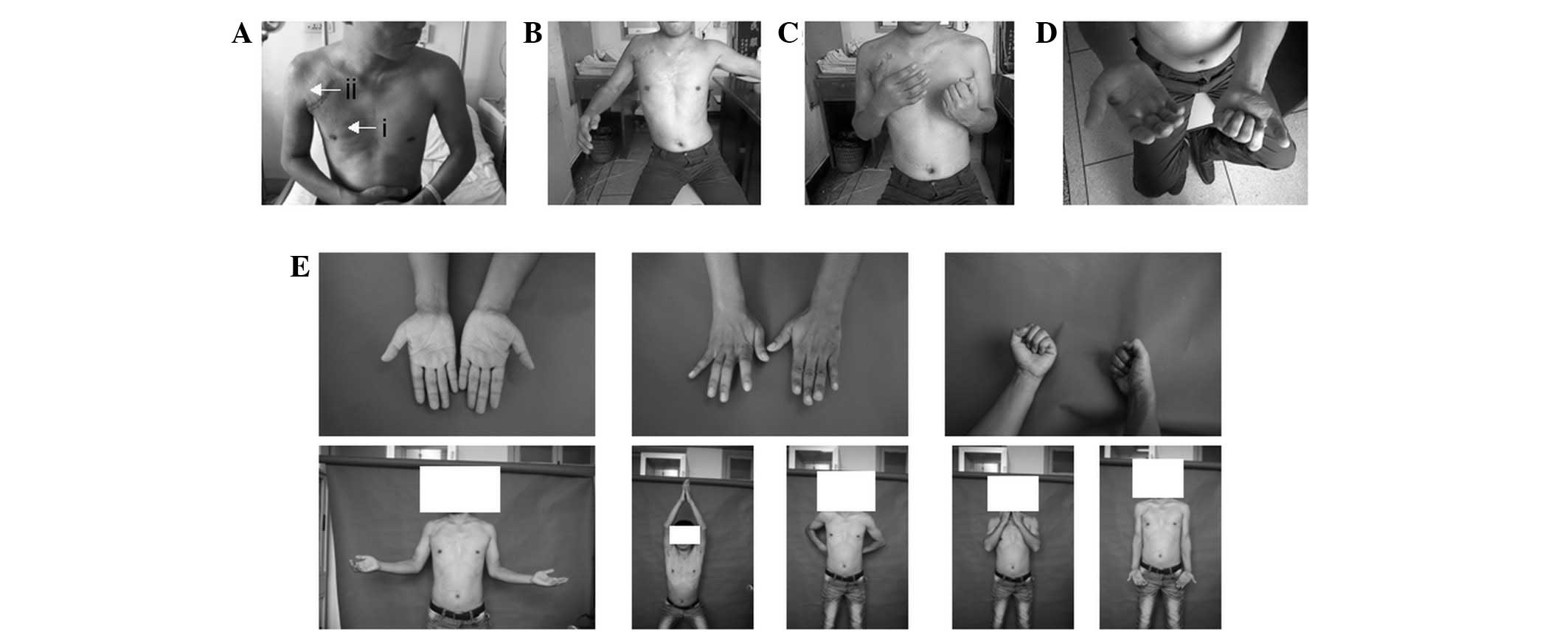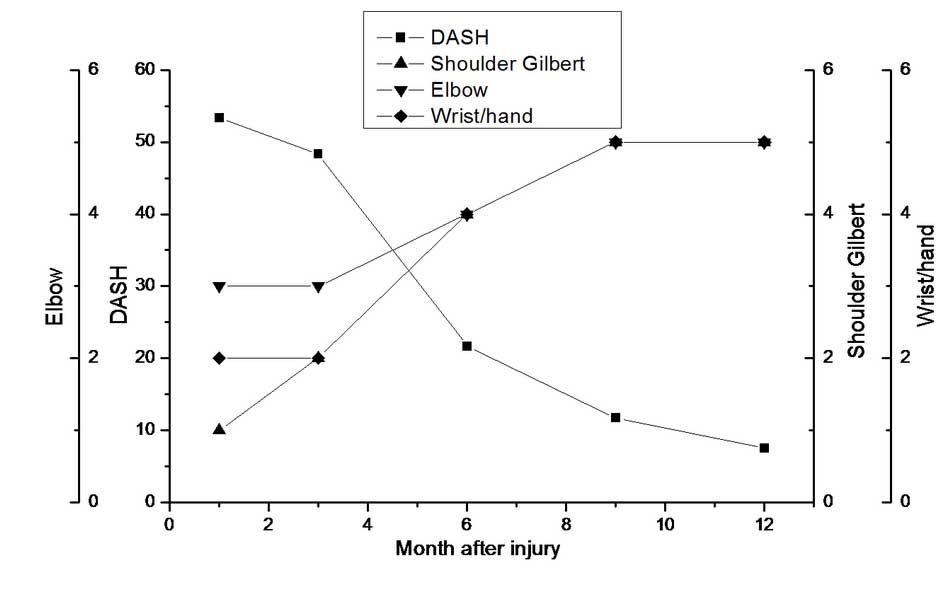Case report of emergency repair of injury to the great vessels of the clavicular region by coated endovascular stent implantation
- Authors:
- Published online on: May 2, 2013 https://doi.org/10.3892/etm.2013.1097
- Pages: 61-64
Metrics:
Total
Views: 0 (Spandidos Publications: | PMC Statistics:
)
Total PDF Downloads: 0 (Spandidos Publications: | PMC Statistics:
)
Abstract
The subclavian artery leaves the thoracic cage at the outer margin of the first rib, where it becomes the axillary artery. Rupture and hemorrhage of the subclavian artery may result in ischemia and necrosis of the upper limb, brachial plexus injury, and even hemorrhagic shock or mortality. A patient with an injury to the proximal segment of the axillary artery underwent emergency repair using a coated endovascular stent graft. The patient was followed up for 13 months and examined using CT imaging, B-mode ultrasonography and electromyography to evaluate stent function and brachial plexus recovery. The endovascular stent graft remained correctly positioned and patent, extending across the injured part of the vessel. Neurolysis at 3 months after injury was effective in restoring the majority of the brachial plexus function. The coated endovascular stent graft was effective in treating the acute injury to the great vessels in the clavicular region. Follow-up of brachial plexus function is important and secondary neurolysis should be performed if necessary.













